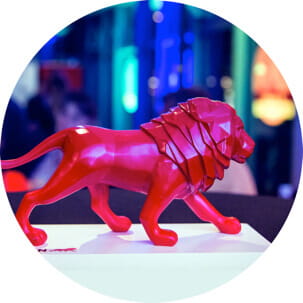
A short history of Lyon, France
Lyon is one of the oldest cities in France. As such, its history and heritage are some of the richest in the country. Whether you want to visit, settle there and start a new life, or you are simply interested in Lyon’s history, you may want to find out more. Here’s a summary of how the city came to be and evolved over time!
Lyon’s foundation in Roman times, its status as a capital and decline
Although the Celts had inhabited the region for a long time, the story of Lyon begins in 43 BCE with the foundation of the Roman colony of Lugdunum by Lucius Munatius Plancus. Thanks to its strategic location, at the confluence of the Saône and Rhône rivers and at the crossroads of major Roman roads, it quickly rose to prominence. Its importance was further solidified when it became the capital of the Gallia Lugdunensis province. This status brought fortune to the city and helped it experience a significant development. A theatre was built on the Fourvière hill, which can still be seen today and is still used for cultural events. Among the most famous people born in Lyon, there are two Roman emperors: Claudius and Caracalla.
However, as the Roman Empire gradually declined, so did Lugdunum. Political strife, invasions, and shifting power dynamics led to a decline in its importance and influence until it lost its capital status in 297 CE in favour of Trier. In the following centuries, the city struggled with the consequences of the Roman withdrawal, setting the stage for a new trajectory in the Middle Ages.
Lyon during the Middle Ages
Following the decline of Roman influence, Lyon entered a period of transition in the early Middle Ages. First becoming part of the Kingdom of the Burgundians in the 5th century, the city was later integrated into the Frankish kingdoms. The city retained a significant religious influence, as the Archbishop of Lyon became an increasingly powerful figure, being finally granted the title of “Primate of the Gauls” in 1079, a distinction that is still in effect today.
The urban fabric of Lyon began to change as people started to settle on the banks of the Rhône, creating what is now known as Vieux Lyon (Old Lyon). Famous landmarks such as the Saint-Jean-Baptiste Cathedral, the seat of the archbishop (whose construction lasted from 1175 to 1480) and the Church of Saint-Nizier were also built during the Middle Ages.
During this time, despite periods of hardships due to power struggles and natural disasters, Lyon was rising and started to re-establish itself as a regional power, a resurgence that would come to fruition during the Renaissance.

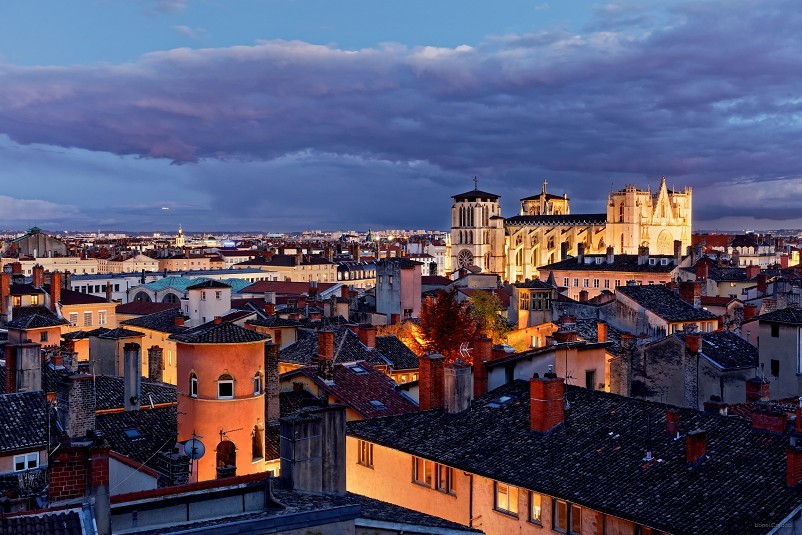
Renaissance and French Wars of Religion
The Renaissance was a second golden age for Lyon, when it became a European hub. Its strategic location, coupled with the establishment of 4 annual trade fairs, attracted merchants and artists from the whole continent. Florentine bankers (such as the Medici, Gadagne or Gondi families), in particular, settled in Lyon and established it as a financial centre. The city’s prosperity was further boosted by the flourishing silk industry, which was introduced in the mid-16th century and the new printing industry, which made Lyon a significant centre for publishing and intellectual exchange. This period saw the construction of many of the mansions and secret passageways called traboules that can still be seen today in the Old Lyon.
However, this era was interrupted by the French Wars of Religion (1562-1598), during which Lyon became a hotbed for protestantism. It faced repression that led to destruction, including the demolition of city’s fortifications, religious buildings and death. Nevertheless, Lyon’s resilience and economic strength enabled it to recover slowly, paving the way for its continuous development into the modern era.

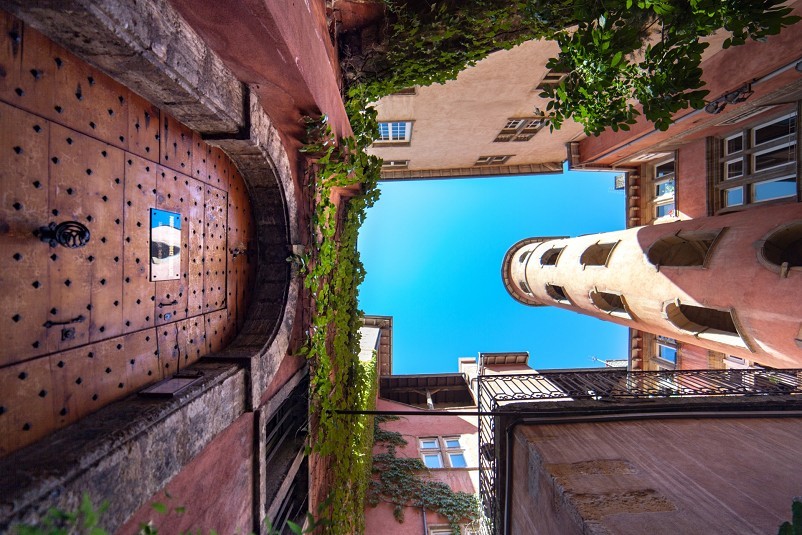
Lyon in the modern period and the French Revolution
During the early modern period, Lyon strengthened its position as an important city within the Kingdom of France. While the silk industry was scarred by the wars of religion, it remained a central economic sector, developing new techniques and designs, establishing the city as the capital of silk in Europe. The specialisation gave rise to a unique social class: the canuts, the local name of silk weavers. Significant urban development also occurred during the 17th and 18th centuries. For example, the city hall was built during this time. Lyon remained an important commercial hub, but dramatic changes were soon to come with the French Revolution.
During these troubled times, in 1793, the city rose against the National Convention that ruled France at the time. The city was subsequently besieged for over two months by the revolutionary army, enduring severe bombardment. It finally fell in 1793 and faced a brutal repression and was even renamed “Commune-Affranchie” (Emancipated Commune) for a few months. While this period saw hardships for the city, it managed to recover again.

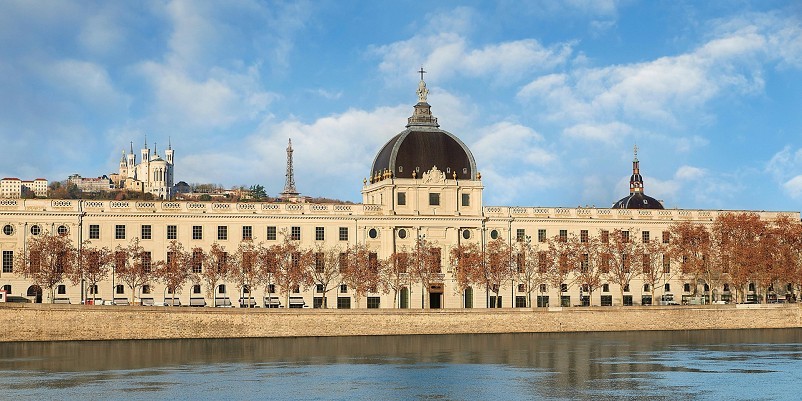
The 20th and 21st century
By the 20th century, Lyon had become one of France’s major industrial centres, particularly for textiles, chemicals, and mechanical engineering. As one of the country’s most important cities, it played a significant role in both World Wars. Although it was not occupied during the First World War, it welcomed many wounded soldiers and used its industrial capacity to produce weapons, explosives and chemical weapons (the Halle Tony Garnier was used for the manufacture of shells, for example).
During World War II, the city was occupied by German forces, but it also became an important centre of the French Resistance. Figures such as Jean Moulin operated from clandestine networks, earning Lyon the nickname ‘Capital of the Resistance’. The city was finally liberated on September 3rd 1944.
Following the war, Lyon started ambitious urban planning and modernisation projects. The construction of the Part-Dieu district transformed the city’s commercial and business landscape, creating a modern urban centre, with iconic buildings such as the tower of the same name. The traditional silk industry gave way to a more diversified economy with sectors such as pharmaceuticals, biotechnology, services or, in more recent years, cleantech. In 1998, thanks to its rich history, Lyon was recognised as a UNESCO World Heritage Site.
In the 21st century, Lyon is a leading European city, blending its heritage with its strong focus on innovation and quality of life The city continues to invest in modern infrastructure and urban projects such as the new Confluence district.

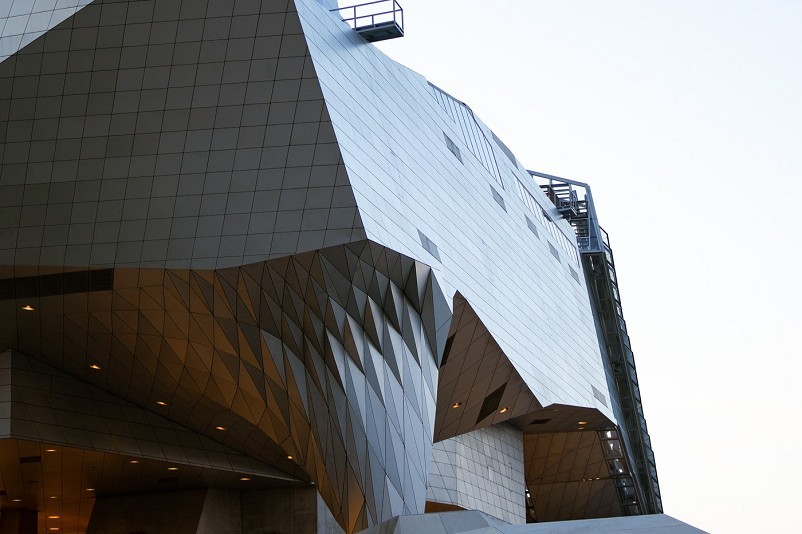
Find out more about Lyon!
Do you want to know more about Lyon and its rich history? Why not come there to visit the city? With its incredible architecture and dynamic cultural life, you will have a lot to explore and discover!

